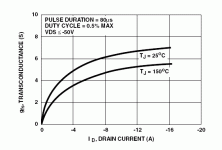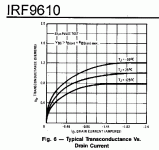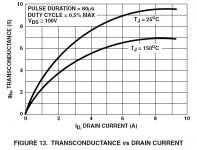Hi Salas,
what's the difference in the sound if shunt 140mA and not 200mA? Because i have a problem with my heatsink. Another question: for the rectifier diode in PS what's the difference between the fast diode and ordinary diode as BY255 in the sound? Thank you! Maxpou
what's the difference in the sound if shunt 140mA and not 200mA? Because i have a problem with my heatsink. Another question: for the rectifier diode in PS what's the difference between the fast diode and ordinary diode as BY255 in the sound? Thank you! Maxpou
Thank's Salas,
i have 24in. of cable between PS and preamp because my power supply is separate from my pre-amp. What's number do you purpose to me for diode? Maybe the last question LOL: How can I ground my 2 boxes if I don't want the ground loop between them? thank you! Maxpou
i have 24in. of cable between PS and preamp because my power supply is separate from my pre-amp. What's number do you purpose to me for diode? Maybe the last question LOL: How can I ground my 2 boxes if I don't want the ground loop between them? thank you! Maxpou
I highly recommend you to use remote sensing 4 wires configuration with such long cables. You will hear a big difference. How it is done, it has been shown many times in the thread. Just browse back. MUR120 is good, not difficult or too expensive. Ground the mains to the psu box, then use a dedicated wire to link the 2 chassis. Better it be some coax that carries the reg wiring and you use its shield for that.
Citation from Borbely Audio
"A good power supply starts with soft/fast recovery rectifier diodes, which have a major influence on the sound of the amp. The best diodes we have found are the BYV-type diodes for low-power applications, the 8A HFA-type HEXFRED diodes from International Rectifier for medium power applications and the 25A HFA HEXFRED, and the 25/50A FRED diodes from Infineon, for high power applications. They reduce noise and improve the dynamics in your amp."
Also Schottky diodes are good for low voltage applications. I am very happy with MBR1045
"A good power supply starts with soft/fast recovery rectifier diodes, which have a major influence on the sound of the amp. The best diodes we have found are the BYV-type diodes for low-power applications, the 8A HFA-type HEXFRED diodes from International Rectifier for medium power applications and the 25A HFA HEXFRED, and the 25/50A FRED diodes from Infineon, for high power applications. They reduce noise and improve the dynamics in your amp."
Also Schottky diodes are good for low voltage applications. I am very happy with MBR1045
Last edited:
Its about connecting the error loop at the load's node and the current sourcing heavy part with another set of wires to meet there too. See how Ricardo did a board for that. http://www.diyaudio.com/forums/analogue-source/129126-simplistic-njfet-riaa-255.html#post1963727
Outstanding results just by replacing R1 (10r) by a 8r2.
Much better overall detail and a big step in "spatiality".... Stage size increased significatively... Need more time to hear the improvements.
Of course there is more heat inside the case but I will replace the sinks.
As per my DMM the 8r2 measure 8r6
Vdrop is 2,04
Calculated current is 237mA (this time the measurents where made with the shunts loaded by the riaa)
As I write, I am dazed by the dinamics.... awesome !
Ricardo
Much better overall detail and a big step in "spatiality".... Stage size increased significatively... Need more time to hear the improvements.
Of course there is more heat inside the case but I will replace the sinks.
As per my DMM the 8r2 measure 8r6
Vdrop is 2,04
Calculated current is 237mA (this time the measurents where made with the shunts loaded by the riaa)
As I write, I am dazed by the dinamics.... awesome !
Ricardo
Last edited:
Once I powered simple JFET line buffer from shunt regulator. Buffer needed only 25 mA and I set shunt current to 100mA. Sound was very nice.
With increased shunt current to 200mA, sound was even better, more punch, more energy, more space.
I keep increasing current more and more and ended with shunt current set to 3A (transformer limited) & very best sound
But my heatsink was not capable to handle heat and I set current to back to 200mA.
Yes, harder you drive this MOSFET's, better will be sound. Difference is audible
But you need BIG heatsinks
With increased shunt current to 200mA, sound was even better, more punch, more energy, more space.
I keep increasing current more and more and ended with shunt current set to 3A (transformer limited) & very best sound
But my heatsink was not capable to handle heat and I set current to back to 200mA.
Yes, harder you drive this MOSFET's, better will be sound. Difference is audible
But you need BIG heatsinks
Last edited:
I run mine in the phono @ 270mA. Vertical Mosfets gain gm and linearity the harder they run. Don't you know that from Pass amps?
See the two graphs. One is for IRFP9240 the other for IRF9610. Normally someone says, choose the smaller faster Mosfet for a shunt that will serve a phono or line circuit. Me I say from the start the heavy one does better. Why? More gm. Slower? OK drive it with a buffer, if the bandwidth helps certain audio circuits. Ricardo see how the 9240 takes off around 0.2-0.25A. Then again at 3A. That is what you hear. Iko, maybe yours is more equal around those currents?
See the two graphs. One is for IRFP9240 the other for IRF9610. Normally someone says, choose the smaller faster Mosfet for a shunt that will serve a phono or line circuit. Me I say from the start the heavy one does better. Why? More gm. Slower? OK drive it with a buffer, if the bandwidth helps certain audio circuits. Ricardo see how the 9240 takes off around 0.2-0.25A. Then again at 3A. That is what you hear. Iko, maybe yours is more equal around those currents?
Attachments
I was surprised because I know your riaa doesn't have wild current variations, so one would think that low output impedance isn't really important. But I trust you guys, if you hear the difference, it means it's there. salas, you make a good point about the transconductance. My using the irfbc40 is a nice compromise between low capacitance and good transconductance  At 2A and 25C it shows just a bit over 5S. Not bad, eh?
At 2A and 25C it shows just a bit over 5S. Not bad, eh?
Attachments
At 2A and 25C it shows just a bit over 5S. Not bad, eh?
Now I look at the curves better, I see that up to 1A that we use them and especially around 200-300mA, the 9240 was a very nice choice for being in my drawer and accessible in all downtown shops all the time. Cool. I use 9140 now. Even better for such common a part. Ooops! Ricardo is off to the shop still wearing his pyjamas.
You're right, the 9240 is a great choice. The irfbc40 I got initially for testing only, because they were so cheap that I could buy a hundred for the price of eight 9240. But they seem to fit my requirements in many ways. They're nice to use in the high voltage version just as well. In retrospect it seems I lucked out on them. I looked again trying to find a better mosfet for what I want to do, but couldn't find it, except in some 2sk parts, which are very difficult to find and expensive.
I haven't seen the IRFBC40 in local shops. Its good NMOSFET indeed. Very good for the Simplistic HV too I would guess. Depletion they don't stock here too. But to tell you the truth I don't like Depletion cascodes much because there is not much feedback between them due to the close voltage. An IRFBC40 CCS open at 5-6V and governed with a cascode tail would take 600V and maybe do better with more Gm even, don't you think?
P.S. Normally is pricier than 9240, at least on Mouser that I looked.
P.S. Normally is pricier than 9240, at least on Mouser that I looked.
Sorry, I don't know which depletion cascodes are you referring to?
irfbc40 can be had for less than a $1.5 at mouser, but I get them much cheaper.
For me the big worry with the irfbc40 in the high voltage shunt is that it cannot handle as much power dissipation as the bigger guys, during start-up.
irfbc40 can be had for less than a $1.5 at mouser, but I get them much cheaper.
For me the big worry with the irfbc40 in the high voltage shunt is that it cannot handle as much power dissipation as the bigger guys, during start-up.
- Status
- This old topic is closed. If you want to reopen this topic, contact a moderator using the "Report Post" button.
- Home
- Amplifiers
- Power Supplies
- The simplistic Salas low voltage shunt regulator


